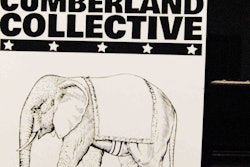You’ve more than likely seen the news, available via Overdrive here, that firm recommendations for guidance on required evaluation and treatment for sleep apnea among truck drivers with a body mass index (BMI) measurement of 35 or higher came down from the FMCSA’s Motor Carrier Safety Advisory Committee in their joint meeting with the Medical Review Board late yesterday. At the 11th hour, too, a second formal recommendation was added to the discussion mix, namely a series of related disqualifying conditions. These come nearly verbatim from prior recommendations to FMCSA from a 2008 medical expert panel on sleep apnea, whose original report you can see here.
Track back through my Twitter feed for various points of view expressed through the daylong affair and/or see my post from yesterday for some of what went on there yesterday. Objections to the recommendations came from various panel members from Todd Spencer of the Owner-Operator Independent Drivers Association to Rob Abbott of the American Trucking Associations, particularly with respect to the notion that these recommendations could be seen as forcing apnea sufferers out of the industry given the high cost associated with diagnostic testing and CPAP treatment in particular. While MRB chair Benjamin Hoffman noted a cost of $800 in the first year of diagnosis, treatment and monitoring, Southeastern Freight Lines compliance director Bill Bennett, speaking from hard experience instituting an apnea screening program among the fleet’s drivers, noted much higher costs — “It isn’t inexpensive,” he said. They’ve found apnea treatment costs “roughly $3,000-$4,000 per person for the first year of monitoring and testing.”

Other objections were numerous, and included the notion, proffered by OOIDA’s Todd Spencer, that concern over apnea was misplaced given the huge problems faced by drivers in the industry. “Do I think drivers will see [HOS, parking, scheduling problems] as far more important than apnea? They clearly will and they’re clearly right.” He went as far at one point as charging that the majority of panelists presenting at the meeting had a clear financial interest in painting the sleep apnea problem as an “epidemic.”
No others went so far, though ATA’s Abbott made a point of abstaining from the vote on recommendation 1.
I thought I’d share the final language of the recommendations today (find it below). These are intended to be guidances to be formally issued ASAP by the FMCSA (though not without public comment, which should begin fairly soon if the agency chooses to move forward with them) while a joint subcommittee made up of MCSAC and MRB members hashes out a proposed sleep apnea rulemaking, with potential to have draft language as early as February of next year.
Drivers, what do you think?
Recommendation 1
A. FMCSA shall issue new guidance for medical examiners that drivers with a Body Mass Index (BMI) of greater than 35 need to be evaluated for obstructive sleep apnea (OSA) using an objective test
B. The driver may be given a 60 day conditional certification during the evaluation and treatment process
C. A driver diagnosed with OSA may maintain certification with evidence of appropriate treatment (if any) and effective compliance and if the examiner determines that the condition does not affect the driver’s ability to safely operate a commercial motor vehicle (CMV).
1) Subsequent certification should be no longer than one year term
2) Future certification should depend on proof of continued compliance with treatment
Recommendation 2 – Immediate Disqualification (from Medical Expert Panel/Medical Review Board recommendations)
Drivers who should be immediately disqualified:
A. Individuals who report that they have experienced excessive sleepiness while driving
B. Individuals who have experienced a crash associated with falling asleep
C. Individuals with an apnea-hypopnea index (AHI) measurement > 20, until such an individual has been adherent to CPAP. They can be conditionally certified based on the criteria for CPAP compliance.
D. Individuals who have undergone surgery and who are pending the findings of postoperative evaluation
E. Individuals who have been found to be effectively non-compliant with their CPAP treatment











